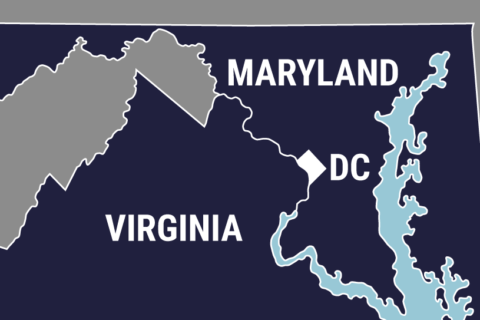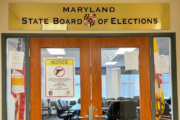WASHINGTON — We are now in the midst of the longest government shutdown in U.S. history. It started Dec. 22 and shows no signs of letting up.
President Donald Trump and congressional Democrats are still in a standoff over Trump’s demand for more than $5 billion in border wall funding — which Trump previously said would be paid for by Mexico.
Friday, Jan. 11, marked the first payday without pay for affected workers, including the FBI.
The situation has devolved into a political tit-for-tat between the president and Democrats. Thursday, Trump canceled the military plane that was to take House Speaker Nancy Pelosi to visit U.S. troops in Afghanistan after she asked him to reschedule his Jan. 29 State of the Union address.
For the 800,000 federal workers caught in the crossfire, the situation is increasingly dire.
Here’s what you need to know, and be sure to check Federal News Network for more information.
Q: What agencies have been affected?
The dispute impacts nine of 15 Cabinet-level departments and dozens of agencies, including the departments of Homeland Security, Transportation, Interior, Agriculture, State and Justice, as well as national parks and forests.
Some large agencies — such as the Defense Department and the Department of Health and Human Services — are unaffected because Congress has already approved funding.
Q: How many federal workers remain on the job?
The shutdown affects different federal employees (and contractors, see below) differently. Some workers are required to report for duty, while many others are furloughed — sent home without pay.
More than 420,000 federal employees are “excepted” from furloughs and continue to work without pay during the shutdown, according to a report by Democrats on the Senate Appropriations Committee.
Those workers required to stay are those generally in public safety fields, including about 41,000 law enforcement (e.g., FBI agents) and corrections officers and nearly 150,000 Homeland Security employees. Those working without pay include about 53,000 Transportation Security Administration workers, 54,000 Customs and Border Protection agents and officers and 42,000 Coast Guard employees.
As many as 5,000 Forest Service firefighters and 3,600 National Weather Service employees continue to work, with the expectation that they will be paid back in full once the government reopens.
Q: Will the shutdown delay tax refunds?
The IRS sent home around 88 percent of its workforce. But on Jan. 15, the agency recalled 46,000 workers to handle tax returns.
With the official start of the tax filing season coming Jan. 28, the Trump administration has promised that taxpayers owed refunds will be paid on time, despite the disruption in government services caused by the partial shutdown now in its fourth week.
There had been growing concern that the shutdown would delay refunds worth hundreds of billions of dollars because the money wouldn’t be available for them from Congress. But last week, the administration said customary shutdown policies will be reversed to make the money available to pay refunds on time.
Only about 10,000 employees are deemed essential and have been working.
Q: How does a snowstorm or other weather event impact the parts of government that are functioning?
The National Park Service will continue remove snow.
For some parts of government, the routine doesn’t change: Listen for guidance from the Office of Personnel Management. The federal government’s human-resources agency will still announce when workers should come into work if it snows, for example, said Nicole Ogrysko, a reporter for Federal News Network.
“They’ll have to note specifically on the OPM operating status site exactly what’s going on, and they’ll have to explain in pretty good detail exactly how this is going to work,” she said.
Q: How many feds have been sent home?
More than 380,000 employees have been furloughed — including nearly all of NASA and Housing and Urban Development and 41,000 Commerce Department employees.
Among those are employees working policy, administration and planning.
Last month, the 32BJ Service Employees International Union said the partial shutdown would be “devastating” to thousands of service-sector employees, including cleaners, security officers and others who work at federal buildings.
Q: What about leave?
All scheduled paid leave and other paid time off — including paid holiday time off — are canceled for employees who work at agencies that are affected by the shutdown, according to OPM.
Employees who are required to report for work during the shutdown and who had already planned to take time off may take what OPM calls an “intermittent unpaid absence.” However, that means they’ll likely have to be furloughed for the time they need to take off during the shutdown and are not guaranteed that they’ll be paid back after the shutdown ends.
On Jan. 9, OPM clarified that it would restore any annual leave that employees lost at the end of 2018 due to the shutdown.
See more pay and leave questions answered by Federal News Network and read OPM’s official guidance from Dec. 22.
Q: What services are affected?
First, the good news. Social Security checks are still going out. The U.S. Postal Service, for example, will go on delivering letters and holiday gifts. Troops will remain at their posts. Doctors and hospitals will get their Medicare and Medicaid reimbursements. In fact, virtually every essential government agency, like the FBI, the Border Patrol and the Coast Guard, will remain open. TSA officers will continue to man airport checkpoints, though an increasing number of them are calling out sick. The Federal Emergency Management Agency can continue to respond to disasters.
Some services are closed, of course.
Q: How are national parks affected?
Many national parks are already closed for the winter, but others remain affected by the shutdown.
D.C.-area national parks will stay as accessible as possible with some limited or closed services. Park roads, lookouts, trails, green spaces and open-air memorials, including the National Mall, are still accessible to visitors.
But, emergency and rescue services are limited, and services like restrooms, visitor centers, information kiosks, and ranger talks and education programs are not available.
At the National Park Service, 80 percent of the workforce is furloughed, closing parks and monuments nationwide.
Here are the areas and sites in the D.C. area closed during the shutdown:
- Arlington House, The Robert E. Lee Memorial (previous closure for rehabilitation)
- Belmont-Paul Women’s Equality National Monument
- Carter G. Woodson Home National Historic Site
- Clara Barton National Historic Site
- Daingerfield Island restaurant, Triple Craft (previous closure)
- Ford’s Theatre National Historic Site (Ford’s Theatre Society will continue to offer performances in the theater as scheduled)
- Fort Marcy
- Fort Washington Park entrance road and visitor center
- Frederick Douglass National Historic Site
- Great Falls (Md.) entrance road and visitor center
- Old Post Office Tower
- Olmsted Island/Great Falls Overlook (Md.)
- Great Falls (Va.) entrance road and visitor center
- Hains Point
- Kenilworth Aquatic Gardens
- Mary McLeod Bethune Council House National Historic Site
- Oxon Hill Farm
- Peirce Mill
- Rock Creek Park Nature Center and Planetarium
- Rock Creek golf course (seasonal closure)
- Turkey Run Park (gated areas)
- Washington Monument (previous closure for elevator modernization)
- White House Visitor Center
The National Park Service advises that visitors use caution on any national park properties, particularly during the shutdown while staff is on furlough.
“I sometimes wonder if they want that impact, to kind of let the public know what’s going on in a very tangible way,” Temin said.
While all public restrooms are closed, a third party has provided portable restrooms at the following locations:
- Lincoln Memorial (south side)
- Thomas Jefferson Memorial
- Tidal Basin (between the Martin Luther King, Jr. and Franklin Delano Roosevelt memorials)
- Washington Monument grounds (15th Street, between Madison Drive and Jefferson Drive)
- West Potomac Park (between Martin Luther King, Jr. Memorial and Franklin Delano Roosevelt Memorial)
- World War II Memorial
There are also a number of other third-party services that have remained open:
- Food kiosk and concessions operated by Guest Services, Inc., continue to operate, with the exception of food and retail operations at the Ellipse Visitor Pavilion and the retail operation located in the basement of the Thomas Jefferson Memorial, as that area is closed to the public.
- Eastern National continue to operate bookstores at the Franklin Delano Roosevelt Memorial, Lincoln Memorial, Martin Luther King, Jr. Memorial, Thomas Jefferson Memorial (mezzanine level only), Washington Monument Lodge and the Old Stone House in Georgetown.
- East Potomac and Langston golf courses are open.
- East Potomac and Rock Creek tennis centers are open.
- The Canal Quarters Program continues.
- Glen Echo Park remains open.
- The Women in Military Service for America Memorial at the entrance to Arlington National Cemetery remains open.
- All marinas on national park land in the D.C. metro area remain open (Belle Haven, James Creek, Columbia Island, Washington Sailing Marina, Fort Washington Marina)
The following construction projects — funded by outside groups — are still open and ongoing:
- Arlington House rehabilitation
- Arlington Memorial Bridge rehabilitation
- Chesapeake and Ohio Canal National Historical Park Locks 3, 4 and 5-22
- Conococheague Aqueduct
- Dyke Marsh restoration
- Lincoln Memorial roof replacement
- National Mall and Memorial Parks water line
- Beach Drive Reconstruction
- United States Park Police District 1 Substation
- Washington Monument elevator modernization/screening facility
- Windy Run Bridge rehabilitation
Q: What about passports and the IRS?
Passport services, which are funded by fees and not government spending, will continue.
The IRS and tax situation is more complicated.
As noted above, the IRS recalled 46,000 workers to handle tax returns.
Some experts question whether the administration has the legal authority to reverse earlier policies to allow the government to issue tax refunds during a shutdown.
In 2011, the chief counsel at the IRS concluded that such payments were legally allowed during a shutdown. At the time, the White House Office of Management and Budget, under President Barack Obama, rejected that position and directed the IRS not to pay refunds during a shutdown. But the IRS said last week that OMB had reviewed the issue at the Treasury’s Department’s request and now agrees with the IRS counsel’s position that refunds can legally be paid.
Q: Will federal workers be paid?
Congress has always made sure that all federal employees are paid retroactively — even those employees who were ordered to stay home.
And Trump signed a bill providing back pay to federal employees affected by the ongoing partial government shutdown.
While they wait for that retroactive pay, they might want to consider unemployment benefits. That, however, can be complicated, because when workers are called back they will have to pay those benefits back.
Workers who are in especially dire hardship situations might qualify for assistance from the Federal Employee & Education Assistance fund.
Other federal workers have been trying out the “gig economy” to make up for lost income.
Angered over employees having to work without pay, the union representing IRS staff sued in federal court last week to challenge any such agency action on constitutional grounds. The Constitution doesn’t allow the government to obligate funds that haven’t been provided by Congress, and the executive branch “can’t continue to force more and more employees to show up in exchange only for an IOU,” the National Treasury Employees Union said.
On Jan. 15, a federal judge rejected the union’s challenge, declining to force the government to pay the recalled employees.
Q: How are contractors affected?
It’s not just federal employees who are affected by a partial shutdown. Contractors who support agency operations are taking a hit.
Whether contractors are expected to work while the government is shut down depends on the nature of the work the contractors do. If the contractor works for an agency that performs essential work that remains open during the shutdown, he is likely required to report for duty as well. And unlike federal employees, whether they get paid is largely up to their companies.
Contractors won’t get paid for the time they lose staying home, causing problems for those who rely on hourly wages.
“Contractors can feel it pretty hard … If you’re operationally supporting an agency, say, running their security operations center or augmenting it, you’ve gotta be on the job and you won’t get paid either until afterwards,” Temin said.
Q: How long will it last?
There’s no way to know.
Previously, the longest government stretched over 21 days in December 1995 into January 1996.
John Koskinen, a former Clinton administration budget official who led shutdown planning activities, told Federal News Network the current shutdown threat resembles the 1990s-era closure.
And on Twitter, President Trump vowed Jan. 10 that he wouldn’t “cave.”
More shutdown news from Federal News Network:
- Shutdown FAQs: Pay, benefits and retirement questions answered
- Feds say morale would take biggest hit from partial shutdown
- Practice makes perfect: Contractors better prepared for real or potential shutdown
- Why a Christmas shutdown is concerning
- An unfunded, unopened government sure is expensive
- White House: We want to make shutdown as ‘painless as possible’
WTOP’s Jack Moore and The Associated Press contributed to this report.










